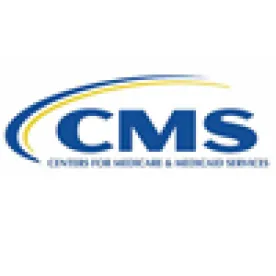Medicare Part C and Part D Star Ratings are used by CMS to measure the quality of and reflect the experiences of beneficiaries in Medicare Advantage (“MA”) and Prescription Drug Plans (“PDPs”). Below is a summary of CMS’ proposed enhancements to the 2019 Star Ratings set forth in the 2019 Final Call Letter (issued by CMS on April 2, 2018) , as well as possible enhancements to the 2020 Star Ratings.
Changes to Measures
CMS will add two new measures for 2019, including “Statin use in Persons with Diabetes” (Part D) and “Statin Therapy for Patients with Cardiovascular Disease” (Part C). CMS is also removing a measure from the Star Ratings, “Beneficiary Access and Performance Problems” (“BAPP”) (Part C and D). The BAPP measure, intended to reflect information about problematic plan behaviors leading to government action, is currently based on CMS sanctions and civil monetary penalties imposed against a plan, as well as “Compliance Activity Module” (“CAM”) data including notices of non-compliance, warning letters, and ad-hoc corrective action plans. The BAPP measure, however, has faced years of methodological concerns. The measure was first removed from the Star Ratings calculation in 2015 based particularly on concerns about the effect of including audit results in the measure. It was then returned to active status in 2016, with audit results removed from the calculation to reduce unfairness.
This 2016 adjustment, however, did not resolve methodological concerns around the BAPP measure and its incorporation of audit outcomes, including through sanctions and civil monetary penalties that may arise from audits. Based on these concerns, CMS proposed additional revisions in its CY2018 Advance Notice/draft Call Letter. Many commenters supported revising the BAPP measure, citing methodological difficulties associated with score components that depend on audit outcomes, including differences in methodologies and goals, the subjective nature of audits, and the absence of audit information for each plan each year. Other commenters, however, raised concerns about CMS’ proposed BAPP measure revisions, leading CMS to retain the BAPP measure in the 2018 Star Ratings. However, CMS signaled in its 2018 Call Letter that it intended to remove all enforcement actions and reductions for plans under sanction due to audit findings from the BAPP measure, to retire the current measure, and to introduce a new displace page letter.
In the 2019 Final Call Letter, CMS carried through with this intention, retiring the current BAPP measure in the entirety for next year. The new BAPP measure will include only CAM data and will be included on the display page for 2019. Currently, the BAPP measure receives a weight of 1.5 and is classified as an access measure. Every contract begins with a BAPP measure of score of 100. A contract’s score is then reduced contingent on their sanction status, CAM score and each CMP related to beneficiary access. The CAM portion of the BAPP score combines information on notices of non-compliance, warning letters, and ad-hoc Corrective Action Plans and their severity. The CAM score per contract is calculated and then converted to deductions ranging from 0 to 80 in increments of 20. This change will remove a source of substantial unpredictability and unjustified variation from Star Ratings scores, at least for the upcoming year. While CMS may certainly reintroduce some form of BAPP measure to the Star Ratings calculation in the future, its experience with the current BAPP measure may well inform selection of a more consistent and relevant set of metrics.
Data Integrity
CMS continues to be concerned about the integrity of data used for Star Ratings given the financial and marketing incentives associated with higher performance in ratings. Like in the past, CMS has signaled that it will continue to conduct reviews to identify incomplete or biased measure data and will modify measure-specific ratings due to data integrity issues.
Regarding data completeness, currently there are four Star Ratings appeal measures that rely on data submitted to the Independent Review Entity (“IRE”). Of these, two are Part C measures – “Plan Makes Timely Decisions about Appeals” and “Reviewing Appeals Decisions” and two are Part D measures – “Appeals Auto-Forwarded” and “Appeals Upheld.” Regarding these measures, CMS has principally relied on the use of audit findings and targeted reviews – if issues with data completeness are identified, appeal measures can be reduced to one star. Stakeholders have argued that reductions based solely on audit findings are unfair since only a subset of contracts of audited each year. In addition, if a reduction due to IRE data integrity was applied, it resulted in a measure-level Star Rating of one star. In response, CMS will adopt its proposal to use statistical criteria to reduce a contract’s Star Rating for data that are not complete or lack integrity using Timeliness Monitoring Project (“TMP”) or audit data. CMS recognized that due to varying degrees of data issues, it will use a methodology for reductions that reflects the degree of the data accuracy issue for a contract instead of a one-size-fits-all approach. For example, contracts with the most severe data quality issues will receive the largest reduction, while contracts with minor data quality issues will receive the smallest reductions.
Categorical Adjustment Index
Based upon CMS’s research regarding within-contract disparity in performance associated with a contract’s percentages of beneficiaries with low income subsidiary and dual eligible (LIS/DE) and disability status, CMS implemented the Categorical Adjustment Index (“CAI”) in the 2017 Star Ratings Program. The CAI is used to address the impact socio-economic status (“SES”) upon Star Ratings. In this call letter CMS stated that “[t]here continues to be additional work in the research community on both identifying the impact of social risk factors on health outcomes and how to best address the impact on clinical quality measurement…” For 2018, the adjustment resulted in plans moving up in ratings – 11 plans’ ratings improved, while 1 plan’s rating decreased. For the 2019 Star Ratings Program, CMS will continue to use the CAI unchanged, but signaled that it would consider modifying the selection of measures rules for 2020.
2020 and Beyond
The Call Letter asks for feedback regarding several new proposed measures for 2020 and beyond. Notably one of the new measures addresses opioid overuse. For HEDIS 2018, NCQA is collecting data on use of opioid at high doses, as well as opioid use from multiple providers. In 2019, NCQA will test a concept involving members who were not prescribed opioids, but who become long-term or chronic users. CMS also signaled that it will continue to focus on Part C organization determinations and reconsiderations and Part D coverage determination and redeterminations by sponsors as these are critical areas.




 />i
/>i


